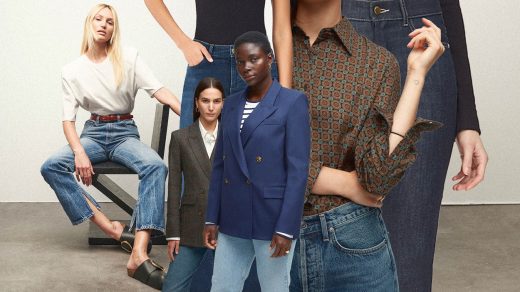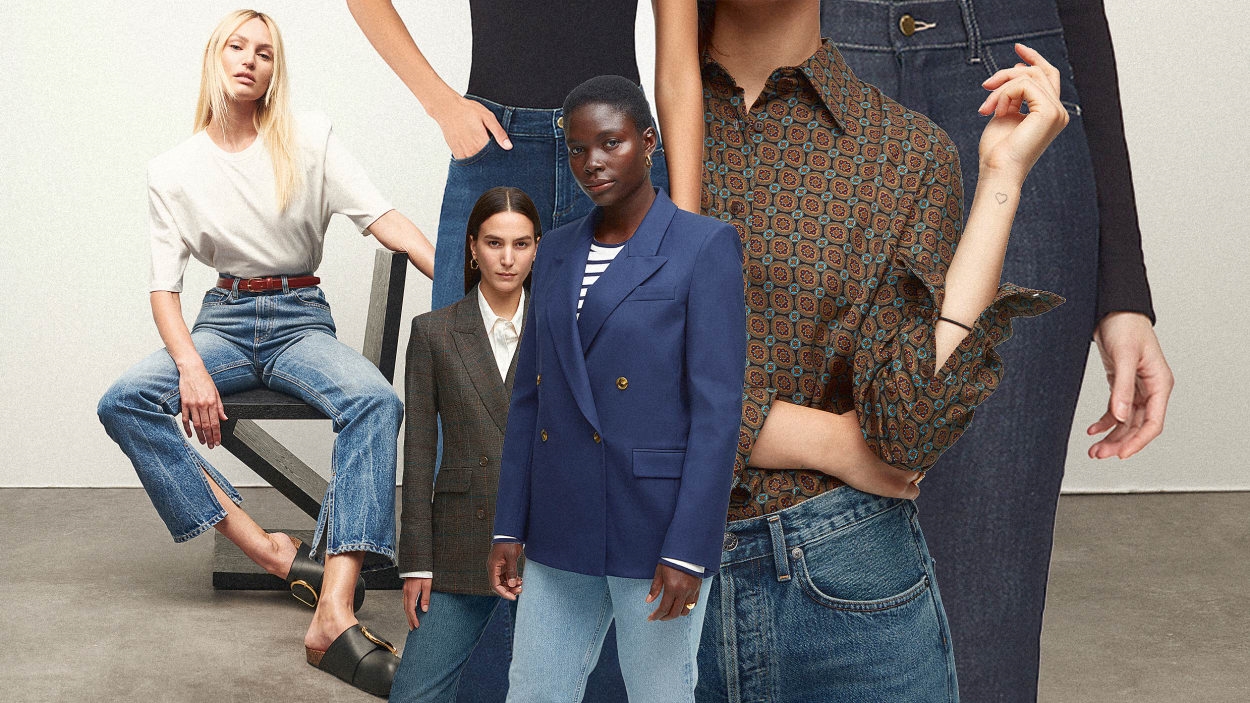You’re going to wear jeans to work in 2023. Here’s how to do it right
For decades, the suit has been the armor of corporate executives, helping them project confidence and professionalism. So when dress codes changes and jeans are the new norm, how do you still look polished?
Workers in the tech and creative fields have been wearing jeans to work since the 1990s, when office dress codes began to erode. But the pandemic has prompted even the most formal industries to ditch their rules of attire. After two years of working from home in sweatpants and leggings, law, consulting, and finance firms are now letting employees wear what they want as their offices re-open. “Bankers went from wearing suits every day to wearing pajamas on Zoom calls,” says Sarah Ahmed, creative director of luxury denim brand DL1961. “Jeans are a happy medium between that.”
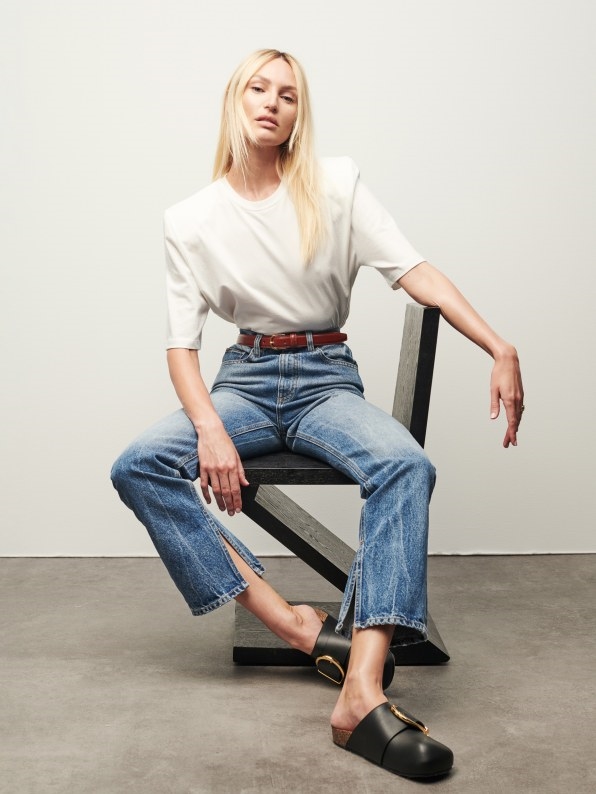
When Wall Street opened back up, workers were seen in wide-leg and slim-cut jeans. Even the legal profession is loosening up. Wilmer Cutler Pickering Hale and Dorr, for instance, has a a firm-wide dress code of “jeans” through Labor Day, but tells employees they should not be too casual. Other top firms are asking employees to use their best judgment about what to wear based on the culture of their particular office.
While these new rules are designed to make workers feel more comfortable at the office, they can also add a new source of stress. Now, professionals don’t just have to worry about looking too casual, but also looking too formal. This can be particularly stressful for women, who are still struggling for equity in the workplace and feel pressure to project professionalism as they climb the corporate ladder. But the good news is that both suiting and denim brands are carefully studying the new workwear landscape and have advice about how to style jeans appropriately for different office cultures.
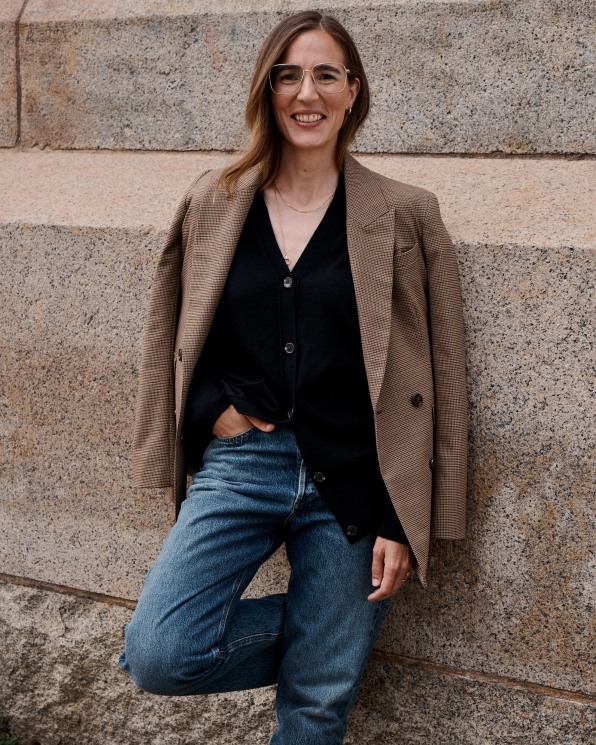
Women And Workwear
For women, figuring out what to wear to work has always been difficult, says Sali Christeson. In 2016, she launched the women’s workwear brand Argent specifically to help female professionals navigate the complexities of dressing for the office.
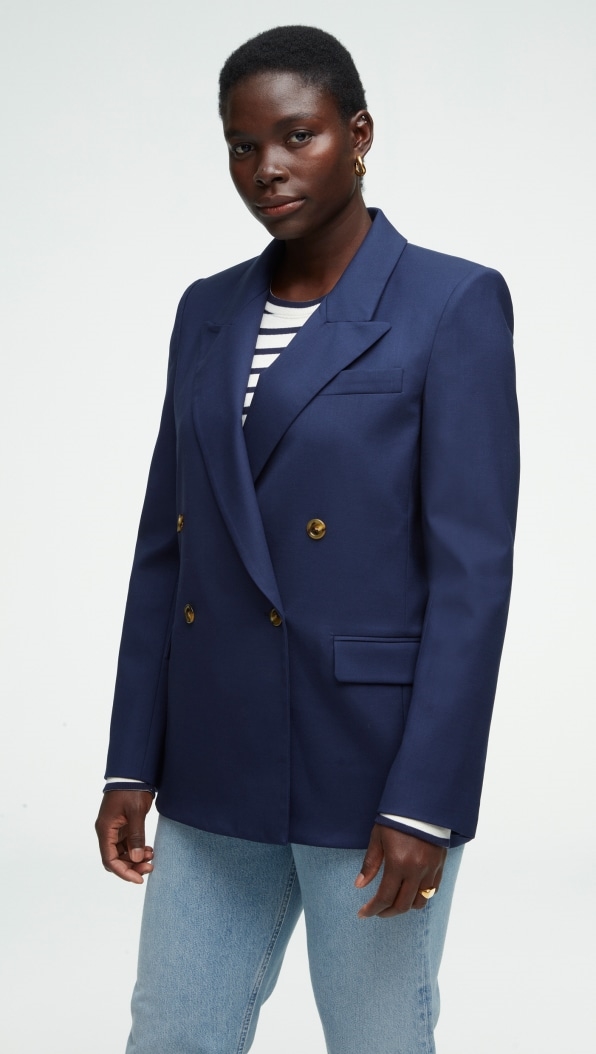
Christeson points out that many women—even in the highest echelons of business—feel pressure to dress more formally than men to be taken seriously. While Mark Zuckerberg famously wore a black hoodie to the office for years as CEO of Facebook, Cheryl Sandberg wore a sheath dress as COO. Jane Fraser, Citibank’s CEO and the only boss of a major Wall Street Bank, continues to wear her signature jewel-toned dress to work; meanwhile, the CEOs of JPMorgan, Goldman, and Jeffries are wearing t-shirts in public.
Argent is best known for its suits, which are beloved by everyone from Hillary Clinton to Kerry Washington. But as women are returning to the office post-COVID, Christeson says that many customers are coming to Argent for styling advice because dress codes have changed. Some companies are explicitly telling new employees not to wear suits, but to dress “business casual.” But it’s unclear exactly what that is. “Suits are now no longer appropriate in some offices, but companies are not coaching employees about what to wear,” Christeson says.
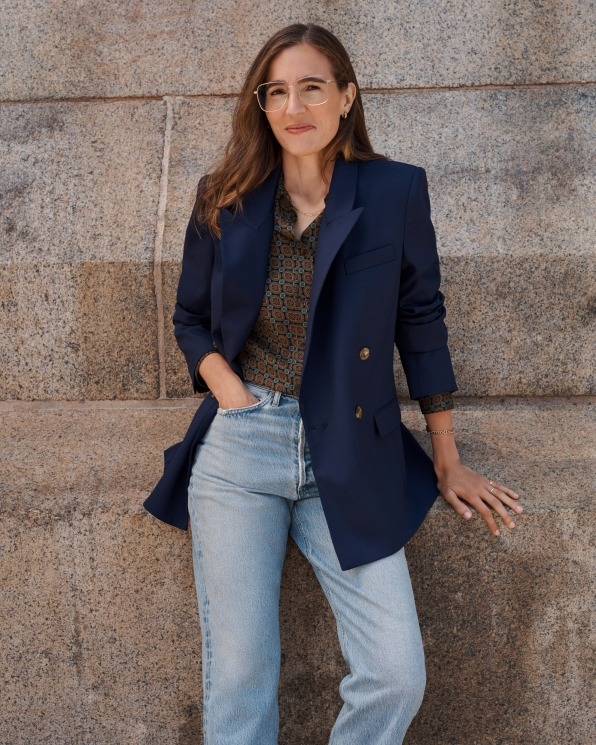
How To Wear Jeans to Work
Ahmed, of DL1961, says that it’s also important to consider how the jeans fit on the body, especially since there are now so many choices when it comes to denim. “The fit has to be on point: It should fit at the waist and never gap or pinch,” she says and also points out you should pick a fabric that will retain its shape. “The easiest way to ruin a professional look is to get wrinkly, saggy jeans halfway through the day.”
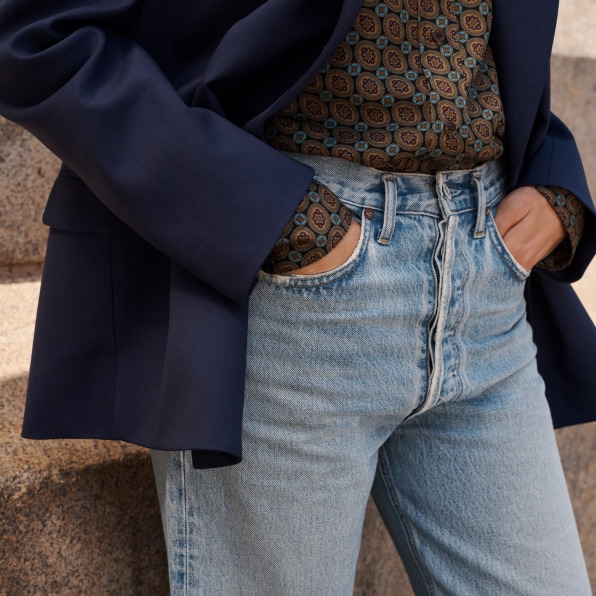
But that’s only the beginning says Christeson. As she interacts with customers, she’s realized that there’s a broad range of what’s considered acceptable when it comes to wearing denim to work. “There’s a lot of subtlety when it comes to what’s appropriate,” says Christeson. “It all comes down to how you style your jeans.”
Christeson has developed a formula of sorts, to help people figure out what to wear to work. She encourages them to think of three things. First, consider the norms of your industry. If formal dress was the norm before the pandemic, you will want to be conservative about how you incorporate jeans. This might mean continuing to wear a button down shirt and a blazer with your jeans, and pairing them with either heels or Oxford shoes. (Ahmed adds that darker wash jeans tend to read more formal, while lighter wash jeans seem more casual.) But if you’re in a more relaxed field, you may opt for a tidy sweater or a well-cut t-shirt paired with sneakers.
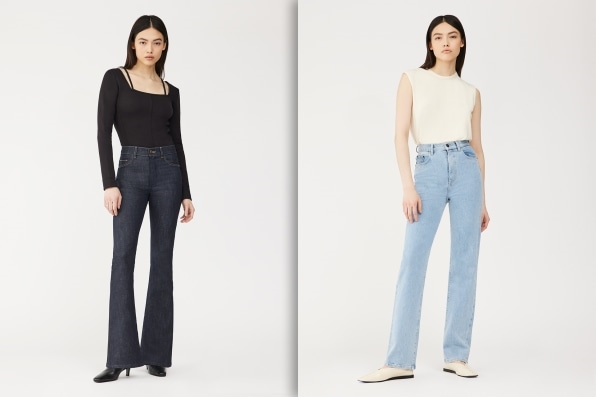
But then, you need to consider the particular vibe of your company. Even within a single organization, workwear norms change from office to office. This is why some law firms are asking new lawyers to take their cue from what others in the office are wearing. Often, this means following the lead of top managers or partners. And to make things more complicated, what’s appropriate may depend on whether you’re interacting with clients. “If you’re doing a presentation outside the company, that might be a day to wear a suit,” says Christeson. “It’s useful to have a wardrobe with several options you can pick from, depending on the day.”
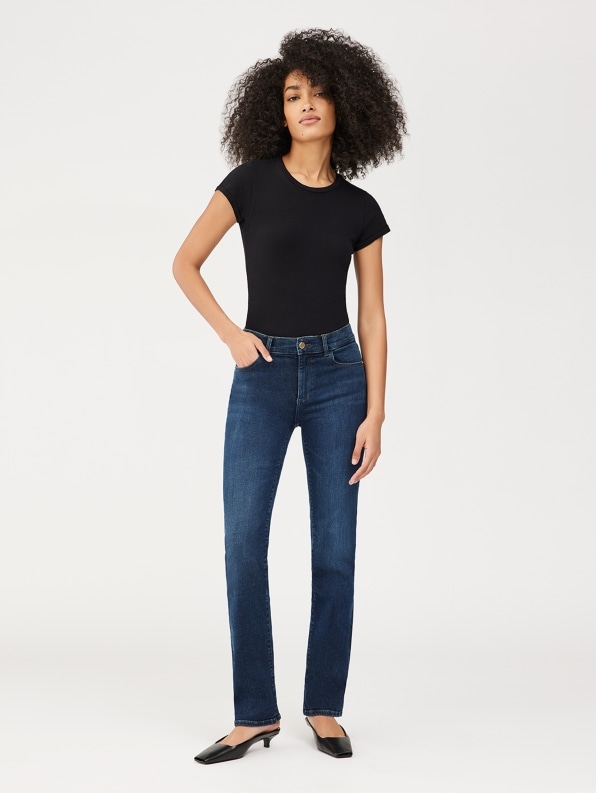
The last thing to think about, Christeson says, is your own personal brand. Now that there are so many possibilities for what to wear in the workplace, there’s more room for self-expression. As she’s worked with customers, she says that a lot of this comes down to color. Some women gravitate towards black and navy outfits that are straightforward because they don’t want to be remembered for their appearance, but for their work. Other women, on the other hand, want to stand out. They’ll pick blazers in bright colors like pink, kelly greens, and cobalt blue. “They want to convey boldness and power,” she says. “They want to stand out and be memorable.”
While the shift in workplace dress codes can be stressful, Christeson argues that it can also be a good thing. Besides allowing us to be more comfortable, it also frees us to be more authentic in the workplace. “We have an opportunity to cultivate an aesthetic based on our personality and career goals,” she says.
(22)

